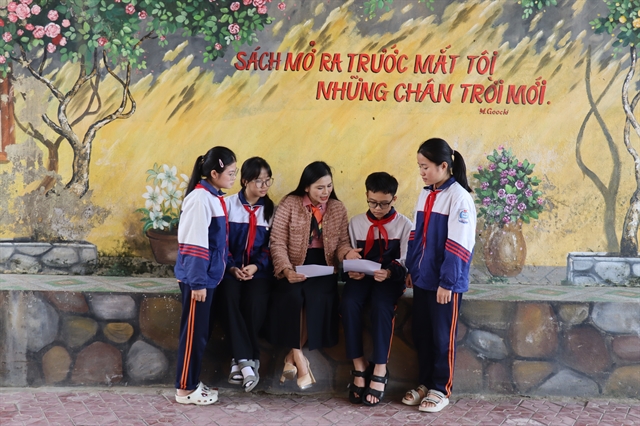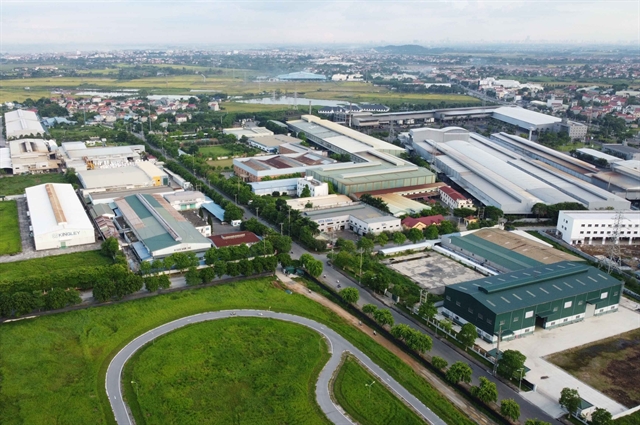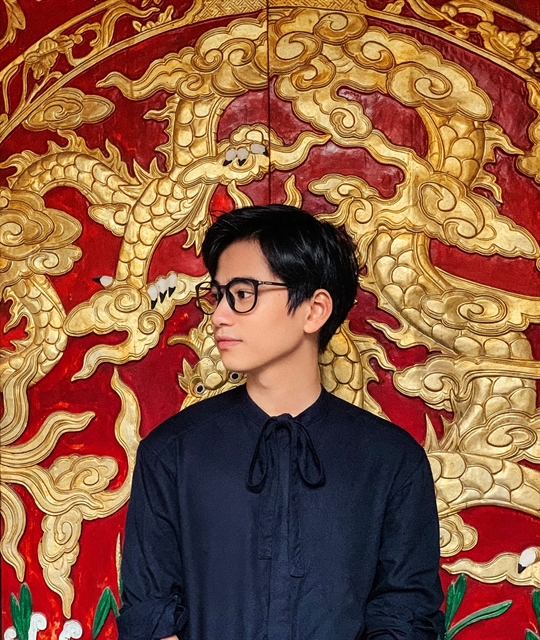 Features
Features

Meet the designers of the posters of many Vietnamese blockbusters like Song Lang, Cô Ba Sài Gòn (The Tailor) and Tấm Cám: Chuyện Chưa Kể (Tấm Cám: The Untold Story) which have gone viral and attracted increasing cinemagoers to watch the films.

|
| Lê Đức Hiệp has created posters for many Vietnamese blockbusters. Photo Hiep Le Duc Facebook |
By Lương Thu Hương
The posters for many Vietnamese blockbusters such as Song Lang, Cô Ba Sài Gòn (The Tailor) and Tấm Cám: Chuyện Chưa Kể (Tấm Cám: The Untold Story) have gone viral and attracted increasing numbers of people to cinemas.
But not many of them know that they were created by Lê Đức Hiệp, who is currently working as a creative director at Business Woman magazine.
Film poster design is not a new concept in Việt Nam, but it has been thriving for the past three years since both producers and distributors have increasingly realised their significance in media campaigns for their films.
However, the number of film poster designers in the country is still low. Hiệp is one of the few and is known to many film producers. In the past four years, he has created posters for 21 Vietnamese films.
Born in the northern province of Hải Dương and now based in Hồ Chí Minh City, Hiệp has spent 12 years working as a graphic designer.
Not professionally trained as a film poster designer, he was first introduced to the job after several invitations from his friends including renowned film producers like Vũ Ngọc Phượng, Ngô Thanh Vân and Namcito to design posters for their projects.
Watch our video on Lê Đức Hiệp's posters on the COVID-19 fight
Hiệp’s first work was the poster for 12 Chòm Sao: Vẽ Đường Cho Yêu Chạy (Zodiac 12: Five Steps of Love), a film by director Vũ Ngọc Phượng, which took him several days to complete.
After his first successful posters, the 34-year-old designer has become more widely known among film producers and has received more invitations to collaborate.
“From just a few, I have created many film posters now and it has become my main job,” he says.
In the early days when he was taking his first steps into the field, Hiệp had to search online to learn about the criteria for a good film poster and how it is different from other graphic design.
With the advantage of experience working as a creative director on many fashion concepts, the realisation of his ideas to specific graphic products has not been too challenging for him.
“I have to take the customers’ budget and execution time into consideration in order not to affect the release schedule of the movie,” Hiệp says.
On average, around 20 Vietnamese films are released per year, around five to six of which have their posters designed by Hiệp.
Poster designers are normally invited to participate either when the film has been finished and waiting to be screened or when the film is still in the scripting phase and waiting for investment.
Hiệp likes to join projects at the beginning, which allows him to take the initiative and have more room for his creativity.
As revealed by a representative of CJ HK Entertainment, the designer should be involved right from the beginning of a project.
After reading the script, Hiệp will then discuss with the production and marketing teams in detail to come up with an idea for the poster. The idea will then be adjusted until everyone is happy. By working this way, the designer is free to create while still satisfying the client.
“Sometimes there is conflict in terms of marketing among the director, producer and PR. Everyone wants to promote the film differently so I might get stuck among dividing opinions,” Hiệp notes.
Other difficulties that he mentions are the limited funding for poster and the undiversified film genres, with the majority of films being comedies, which therefore limit the space for creativity
He also admits that the influence from Hollywood posters is inevitable, as Vietnamese film poster design is a late comer.
“Film poster design in Hollywood has been professional for dozens of years while the field has only been looked at by domestic film producers in recent years,” Hiệp says.
“Every poster has its own difficult and sophisticated features. Some demand strict photo shoots while others need difficult graphic processing, while some are hard to find ideas.”
According to the designer, a successful poster will bring attract more people to a film. Particularly in this digital era, a poster is not only to be hung in cinemas during the screening but also used as a promotional tool for the film to be shared on the internet.
“Once its title has been imprinted in the audience’s minds, they will be more likely to go and watch the film,” he says.
His most successful graphic artwork might be for The Tailor, which went viral and created a trend throughout 2017.
“Thanks to the poster, it seemed that nearly every Vietnamese person knew about The Tailor, Hiệp says.
“It is every film producer’s wish to make the poster go viral. I'm happy that many of my products like the one for Tấm Cám: The Untold Story and The Tailor have been shared and modified on the internet by many people because they only do so if they like the posters. It is also considered a success of our work.”

|
| The poster for Cô Ba Sài Gòn (The Tailor) designed by Hiệp. Photo thethaovanhoa.vn |
“Galaxy Studio Joint-Stock Company has cooperated with Hiệp on film projects such as Bạn Gái Tôi Là Sếp (She’s the Boss), 100 Ngày Bên Em (100 Days of Sunshine), Ước Hẹn Mùa Thu (Autumn Promise) and the upcoming Kiều (The Tale of Kiều),” says Nguyễn Thị Huyền Trang, marketing director of Galaxy Studio, in an interview with Tuổi Trẻ (Youth) newspaper.
“We have worked together well, and we secure working with him due to his professionalism and dedication,” she adds.
2020 continues to be a busy year for Hiệp. He reveals that he is working on four posters for four films, in addition to getting involved in the graphic design phase on two other films and one music video that will come out at the end of this year. VNS